Agrimony – xian he cao,agrimony herb,agrimoniae herba,agrimonia eupatoria,agrimony bachblüte,agrimonia herb,agrimoniae,common agrimony,Agrimony
[Medicinal] The above-ground part of Agrimonia pilosa Ledeb., a herbaceous plant of the Rosaceae family.
[Nature and flavor and meridians] Bitter, flat. Enters the liver, lung, and spleen meridians.
[Effects] Stop bleeding, replenish deficiency
[Clinical application] 1. Used for a variety of bleeding diseases.
Agrimony has a wide range of hemostatic effects and can be used for bleeding diseases in all parts of the body, regardless of cold, heat, deficiency, or excess. It can be taken alone or in combination with other hemostatic drugs, and is often used together with Eclipta prostrata. If it is caused by blood heat, it can be used in combination with cooling blood and stopping bleeding, such as fresh Rehmannia glutinosa, red peony root, moutan bark, Platycladus orientalis leaves, lotus root nodes, etc.; if it is used for bleeding due to deficiency and cold, it can be used in combination with Qi-tonifying, Qi-tonifying, warming and yang-stopping drugs, such as Codonopsis pilosula, Astragalus membranaceus, Rehmannia glutinosa, white peony root, roasted ginger, stove heart soil, mugwort, etc.
2. Used for fatigue and overwork.
This product also has the effect of tonifying and strengthening the body, and can be used to treat fatigue and injury. It is called “depletion grass” by the people, and is often decocted with jujube.
[Prescription name] Crane grass (wash, dry, and chop)
[General dosage and usage] Three to five coins, large doses of one to two liang, decocted.
[Note] Crane grass tastes bitter and is flat in nature. It is good at stopping bleeding and can treat bleeding diseases in various parts. It can be used regardless of cold, heat, deficiency or excess. It has a significant effect and is often used as the main medicine. It can be appropriately matched with the cause and the situation. It is used by the people to treat fatigue and injury, and it is called “depletion grass”. It is also very useful. In addition, “Southern Yunnan Materia Medica” states that this product can treat red and white dysentery, but now it is only used clinically for the effects of stopping bleeding and tonifying deficiency. Regarding the treatment of dysentery, it is worth further research.
Crane grass
Chinese medicine name. It is the dried upper part of Agrimonia pilosa Ledb, a plant of the genus Agrimonia in the Rosaceae family. It has the effects of astringent hemostasis, dysentery, antimalarial, and tonifying deficiency. It is mainly used to treat various bleeding syndromes, chronic diarrhea and dysentery, cold and heat malaria, qi and blood deficiency, exhaustion, and fatigue, etc.
Crane grass bud, dragon tooth grass, Shizhou dragon tooth grass, melon grass, yellow dragon tail, iron wasp, golden top dragon bud, old stork mouth, mother and child grass, hairy foot grass, yellow dragon tooth, grass dragon tooth, ground pepper, yellow flower grass, snake bump, dragon head grass, inch eight sections, passerby, hairy chicken, Jerry flower, line hemp flower, debility grass, knife edge medicine, big hair medicine
Crane grass
Efficacy and effect Clinical application Processing and preparation Preservation method Medicinal material identification Botanical information
Efficacy and effect
Funkció
Astringent hemostasis, dysentery, antimalarial, and tonifying deficiency.
Javallatok
It is mainly used to treat various bleeding syndromes, chronic diarrhea and dysentery, cold and heat malaria, qi and blood deficiency, exhaustion, and fatigue, etc.
Használat és adagolás
Oral: decoction, 10-15g, large dose can be 30g; or into powder. For external use: pound and apply; or boil and apply the paste.
Óvintézkedések
After taking, it may cause palpitations, facial congestion and flushing.
Kémiai összetétel
This product mainly contains phloroglucinol condensate, flavonoids, and organic acid compounds. The hemostatic ingredients include agrimony, tannins, gallic acid and vitamin K.
Farmakológiai hatások
1. Effects on the blood system: agrimony alcohol extract can contract peripheral blood vessels and has a significant procoagulant effect.
2. Effects on the cardiovascular system: agrimony can strengthen myocardial contraction and slow down the heart rate.
3. Insecticidal effect: agrimony has a definite inhibitory and killing effect on Taenia solium, cysticercosis, larvae, Taenia mori and short-shelled tapeworms, and has an inhibitory and killing effect on Plasmodium and Trichomonas vaginalis.
4. In addition, agrimony also has antibacterial and anti-inflammatory, anti-tumor, and analgesic effects.
Kapcsolódó vita
1. “Southern Yunnan Materia Medica”: Treats women’s menstruation before or after, red and white discharge, cold face and back, back pain, fever and flatulence, red and white dysentery.
2. “Compendium of Materia Medica Supplement”: Ge Zu Fang: Eliminates food stagnation, disperses fullness in the middle, relieves gas, treats vomiting blood, stomach upset, dysphagia, malaria, throat paralysis, sprains, intestinal wind and blood, metrorrhagia, food accumulation, jaundice, carbuncle, lung abscess, breast abscess, hemorrhoids.
Klinikai alkalmazás
1. Treats bleeding syndrome caused by blood heat, and can be used with cooling blood and hemostatic drugs such as Rehmannia glutinosa, Platycladus orientalis, and Paeonia suffruticosa; treats bleeding syndrome caused by deficiency and cold, and can be used with Qi-tonifying and blood-tonifying, meridian-warming and hemostatic drugs such as Codonopsis pilosula, Rehmannia glutinosa, Paojiang, and Artemisia argyi.
2. Treat fatigue caused by excessive labor. For patients with symptoms of fatigue, sallow complexion and normal appetite, it is often cooked with jujubes and the juice is eaten. For patients with deficiency of qi and blood, fatigue, dizziness and vertigo, it can be used together with Codonopsis pilosula, Rehmannia glutinosa, longan meat, etc.
Kapcsolódó kombinációk
Herba amaranth with donkey-hide gelatin: Herba amaranth is good at astringing and stopping bleeding, and has a strengthening effect; donkey-hide gelatin is good at replenishing blood and stopping bleeding, nourishing yin and moistening dryness. The two are paired and have a strong hemostatic effect. In addition, Herba amaranth can regulate qi and blood; donkey-hide gelatin can nourish blood and moisten dryness. The two are paired and have the function of nourishing blood and replenishing deficiency. It is suitable for patients with deficiency, hemoptysis, hemorrhage, hematuria, etc. and yin and blood deficiency.
A gyógyszeres kezelés differenciálása
Herba amaranth and gardenia: Both medicines have the function of cooling blood and can be used for a variety of bleeding syndromes. However, Gardenia has strong heat-clearing and detoxifying effects, so it is often used for bleeding syndromes caused by blood heat; Herba Agrimoniae has astringent and hemostatic effects, and can be used regardless of whether it is cold or hot. Both medicines have the function of detoxification and swelling, and can be used to treat sores, carbuncles, and swelling. However, Gardenia has a strong ability to cool blood and detoxify, reduce swelling and relieve pain; it also has the functions of purging fire and relieving restlessness, detoxification and dampness.
Kapcsolódó gyógyszerek
Weixuening granules (mixture), Dafeicao, ulcer capsules, Fu’an granules, Yangxue Anshen tablets (syrup, pills).
Medicinal diet therapy
Herba Agrimoniae and red dates soup:
1. Efficacy: nourish the spleen and blood, reduce the damage of radiotherapy and chemotherapy to the hematopoietic system. Suitable for patients with various cancers undergoing radiotherapy and chemotherapy.
2. Raw materials: 15 red dates, Herba Agrimoniae 30g.
3. Method: Put red dates and Herba Agrimoniae into a pot, pour in 3 bowls of water, and boil until 1 bowl.
4. Usage: Take the juice and drink it, 1 dose per day, can be decocted twice in a row, divided into 2 doses.
Processing and preparation
Betakarítás és feldolgozás
In the year of planting or the second year, when the branches and leaves are lush and not blooming, cut the above-ground part into sections, dry them in the sun or use them fresh.
Feldolgozási módszer
1. Crane grass: Take the original medicinal material, remove the residual roots and impurities, wash, moisten slightly, cut into sections, and dry them.
2. Crane grass charcoal: Take the crane grass section, put it in a pot, heat it with high heat, stir-fry until the surface is black, sprinkle a little water to extinguish the sparks, take it out immediately, spread it out, and cool it thoroughly.
Tárolási mód
Store in a dry container, seal it, and place it in a ventilated and dry place. Crane grass charcoal needs to dissipate heat to prevent re-ignition.
Identification of medicinal materials
Azonosítás
1. The powder of the leaves of this product is dark green. The upper epidermal cells are polygonal; the lower epidermal cell walls are wavy, and the stomata are indefinite or unequal. Non-glandular hairs are single-celled, of varying lengths, with thick walls, lignified, and with warty protrusions, and a few have spiral textures. The small glandular hairs have 1-4 cells in the head, are oval, and have 1-2 cells in the stalk; there are also a few glandular scales, with single-celled heads, about 68μm in diameter, containing oil droplets, and single-celled stalks. There are many clusters of calcium oxalate crystals, with a diameter of 9-50μm.
2. Take 2g of this crystal powder, add 40ml of petroleum ether (60-90℃), ultrasonically treat for 30 minutes, filter, evaporate the filtrate, dissolve the residue in 10ml of chloroform, shake and extract with 10ml of 5% sodium hydroxide solution, discard the chloroform solution, adjust the pH value of the sodium hydroxide solution to 1-2 with dilute hydrochloric acid, shake and extract with chloroform twice, 10ml each time, combine the chloroform solution, add 10ml of water to wash, discard the water solution, and concentrate the chloroform solution to 1ml as the test solution. Take another 2g of the reference medicinal material of the fairy quail grass, and prepare the reference medicinal material solution in the same way. Take the reference material of the fairy grass phenol B, add chloroform to make a solution containing 0.5mg per 1ml, as the reference solution, test according to the thin layer chromatography method (General Rule 0502), take 10μl of each of the above three solutions, and spot them on the same silica gel G thin layer plate, use the upper layer solution of petroleum ether (60-90℃)-ethyl acetate-acetic acid (100:9:5) as the developing agent, develop, take out, dry, spray with 10% sulfuric acid ethanol solution, and heat at 105℃ until the spots are clearly colored. In the chromatogram of the test sample, spots of the same color appear at the corresponding positions of the chromatogram of the reference medicinal material and the chromatogram of the reference product.
Gyógyászati anyagok tulajdonságai
The whole body is 50-100cm long and covered with white soft hairs. The lower part of the stem is cylindrical, with a diameter of 0.4-0.6cm, reddish brown, and the upper part is square, slightly concave on all sides, with green-brown hairs, longitudinal grooves and ridges, and nodes; the body is light, hard, easy to break, and the cross section is hollow. The odd pinnate compound leaves are alternate, dark green, wrinkled and curled; brittle and fragile; the leaves are of two sizes, alternating on the rachis, with larger leaflets at the top, and the complete leaflets are ovate or oblong after unfolding, with a pointed tip, a wedge-shaped base, and serrated edges; there are 2 stipules, clasping the stem, and obliquely ovate. The raceme is slender; the lower part of the calyx is tubular, with hooks on the upper part of the calyx tube, and 5 lobes at the tip; the petals are yellow. The smell is slight and the taste is slightly bitter. The ones with tender texture and many leaves are better.
A főzetdarabok tulajdonságai
1. Crane grass: See the properties of medicinal materials.
2. Crane grass charcoal: shaped like crane grass, black, with a little charcoal powder.
Agropyron sphaerocephalum, a plant of the genus Agropyron in the Rosaceae family.
Morfológiai jellemzők
Perennial herb, 30-120cm high. The rhizome is short, and there are often 1 or several underground buds at the base. The stem is sparsely pubescent and short pubescent, rarely sparsely long and hard hairs at the lower part. Odd-pinnate compound leaves are alternate; stipules are sickle-shaped, rarely ovate, with acute or acuminate tips, sharp serrations or lobes on the margins, rarely entire; leaflets are of two sizes, alternating on the rachis, the larger leaflets have 3-4 pairs, rarely 2 pairs, and decrease to 3 leaflets upwards, the leaflets are almost sessile, obovate to obovate-lanceolate, 1.5-5cm long, 1-2.5cm wide, with acute to obtuse tips, rarely acuminate, cuneate base, with acute to obtuse serrations on the margins, green above, sparsely pubescent, light green below, sparsely pubescent on the veins, rarely falling off and hairless, with obvious glandular dots. The raceme is single or 2-3 and grows at the top of the stem. The axis of the inflorescence is pubescent, and the pedicel is 1-5mm long and pubescent. The bracts are usually deeply lobed, with band-shaped lobes, opposite bracteoles, ovate, entire or split at the edge. The flower diameter is 6-9mm, with 5 sepals, triangular ovate; 5 petals, oblong, yellow; 5-15 stamens; 2 styles, filamentous, and the stigma is capitate. Achenes are obovate-conical, with 10 ribs on the outside, sparsely pubescent, and several layers of hooks at the tip. They are erect when young and close inward when mature. The hooks are 7-8mm long and the widest diameter is about 3-4mm. Flowering and fruiting period is from May to December.
Elosztási terület
Distributed in all parts of my country from north to south.
Hiteles gyártási terület
Mainly produced in Zhejiang, Jiangsu, Hunan, Hubei and other places.
Növekedési környezet
Grows by streams, roadsides, grasslands, bushes, forest edges and under sparse forests.
Growth apprentice
It has strong adaptability to climate and can withstand severe cold. It can be planted in general soil, and planting in relatively fertile sandy loam can increase yield. It grows faster in rainy and hot July-August.
Reprodukciós módszer
Propagate by seeds or root division.
Termesztési technológia
1. Seed propagation: Spring sowing in late March in the south and mid- to late April in the north; autumn sowing in late September to early October in the south; in the north before the ground freezes in late October to early November. Make a 1.3m flat bed on the prepared ground, dig a 1-2cm deep furrow with a row spacing of 30-40cm for row sowing, evenly spread the seeds into the furrow, cover with thin soil, press slightly, and water. The sowing amount per 1h㎡ is 15-22.5kg, the suitable temperature for germination is 25℃, and the seedlings emerge 10-15d after sowing.
2. Root division propagation: It can be carried out in spring and autumn. Dig out the roots and split them. Each root has 2-3 root buds and plant them in time. For hole planting, dig a 15cm deep hole with a row spacing of 30cm×15cm, and plant 1 root in each hole. Cover the soil with 5cm, compact and water. If it has sprouted, expose the buds to the ground when planting, and water after planting. The emergence rate can reach more than 95%.
Where is the main medicinal part of Agrimonia pilosa?
Medicinal part of Agrimonia pilosa:
This product is the dried above-ground part of Agrimonia pilosa Ledeb., a plant of the Rosaceae family.
Harvest when the stems and leaves are lush in summer and autumn, remove impurities and dry.
Characteristics of the medicinal part of Agrimonia pilosa:
This product is 50~100cm long and covered with white soft hairs. The lower part of the stem is cylindrical, 4~6mm in diameter, reddish brown, and the upper part is square columnar, with concave green-brown on all sides, longitudinal grooves and ridges, and nodes; the body is light, hard, easy to break, and the cross section is hollow.
The odd-pinnate compound leaves are alternate, dark green, wrinkled and curled; brittle and easy to break: the leaves are of two sizes, alternating on the rachis, the top leaflet is larger, and the complete leaflet is ovate or oblong after flattening, with a pointed tip, a shaped base, and serrated edges; there are 2 stipules, clasping the stem, obliquely ovate.
The raceme is slender, the lower part of the calyx is tubular, the upper part of the calyx tube has hooks, the tip is 5-lobed, and the petals are yellow. The smell is slight and the taste is slightly bitter.
How are crane grass recorded in ancient books?
“Southern Yunnan Materia Medica”: “Treats women’s menstruation before or after, red and white leucorrhea, cold face and abdominal pain, and red and white bloody dysentery over time.
“Materia Medica Seeking Truth”: “Steam the leaves with vinegar and apply them to ulcers. It is the best to remove rot, reduce swelling, and wash rheumatism and rotten feet.
“Essentials of Herbal Medicine”: “Treats bruises, stops bleeding, and disperses sores.
“Illustrated Records of Plant Names and Realities”: “Treats wind phlegm and waist pain.
Hatások
Crane grass has the effects of astringing and stopping bleeding, stopping malaria, stopping dysentery, detoxifying, and replenishing deficiency.
What are the main effects and clinical applications of crane grass?
Crane grass is used for hemoptysis, hematemesis, metrorrhagia, malaria, bloody dysentery, carbuncle, sores, leucorrhea, and fatigue.
Bleeding
·Treats bleeding caused by blood heat, and can be used with raw rehmannia, cypress leaves, and peony bark.
For the treatment of cold-deficiency bleeding, it can be used together with Codonopsis pilosula, Rehmannia glutinosa, Paojiang, etc. .
Malaria cold and heat, chronic diarrhea and dysentery, carbuncle, sore, vaginal itching and leucorrhea
For the treatment of malaria, it can be used alone and ground into powder, and swallowed 2 hours before the onset of malaria. .
·For the treatment of chronic diarrhea and dysentery, it can be decocted with water alone.
For the treatment of carbuncle, sore … What other effects does crane grass have?
The commonly used medicinal recipes of crane grass are as follows:
Hemostasis, suitable for metrorrhagia and menorrhagia
·30 grams of crane grass, 15 grams of chrysanthemum, 15 grams of honeysuckle, 6 grams of licorice, 24 grams of quartz, and 30 grams of white sugar. ·Wash the above crane grass, chrysanthemum, honeysuckle, licorice, white quartz, and purple quartz separately and place them in an aluminum pot; add appropriate amount of clean water and boil over high heat, then switch to low heat and cook for 20 minutes, filter out the residue and keep the juice, then add white sugar to the juice and stir well.
Nourishing blood and replenishing the middle, stopping bleeding and reducing inflammation
·20 grams of crane grass, 10 grams of Panax notoginseng powder, and 250 grams of glutinous rice.
·First, add appropriate amount of water to glutinous rice and cook it into porridge, then add crane grass and Panax notoginseng powder, and cook for another 20 minutes. Take it twice a day in appropriate amount. Take for 5 consecutive days
Megjegyzés: A kínai gyógynövénykészítmények használatának a szindróma megkülönböztetésén és kezelésén kell alapulnia, és professzionális kínai orvosok irányítása alatt kell alkalmazni. Ne használja őket tetszés szerint, és ne hallgasson tetszés szerint a kínai orvoslás receptjére és reklámjaira.
What are the compound preparations containing crane grass?
Compound crane grass enteritis capsules
Clear heat and dry dampness, strengthen the spleen and stop diarrhea. It is used for diarrhea caused by spleen deficiency and dampness, diarrhea without discomfort, or loose stools, lack of appetite, fatigue, abdominal distension and pain; chronic enteritis with the above symptoms. Urgent,
Pingxiao tablets
Activate blood circulation and remove blood stasis, disperse nodules and reduce swelling, detoxify and relieve pain. It has the effect of relieving symptoms, shrinking tumors, improving the body’s immunity and prolonging the patient’s survival time for patients with tumors caused by internal toxic stasis.
Modern research progress on crane grass
This product has multiple pharmacological effects such as anti-inflammatory, analgesic, anti-tumor, hypoglycemic, antihypertensive, hemostatic, inhibition and killing of malarial parasites and vaginal trichomoniasis.
Felhasználási mód
Herba amaranth has the effects of astringent hemostasis, antimalarial, antidysentery, detoxification and tonic. Generally, herba amaranth is used for internal and external use.
How to use herba amaranth correctly?
When herba amaranth is decoctioned for internal use, the common dosage is 6~12g, and the large dose can be 30~60g. When herba amaranth is used externally, take an appropriate amount of herba amaranth, mash it and apply it to the affected area; or boil it into a paste for application; or boil it into a decoction for fumigation and washing. Herba amaranth can be processed by different methods to produce herba amaranth, herba amaranth charcoal and other Chinese medicinal materials. Different processing methods have different effects and efficacy.The same, but the method of use is the same. Please follow the doctor’s instructions for specific use.
Crane grass is generally used in decoctions, decocted and taken, and can also be made into powder or pills. However, the use of Chinese medicinal materials must be based on syndrome differentiation and treatment, and should be used under the guidance of professional Chinese medicine practitioners. Do not use them at will, and do not listen to Chinese medicine prescriptions and advertisements at will.
How to prepare crane grass?
Crane grass
Take the original medicinal materials, remove the residual roots and impurities, wash, moisten slightly, cut into sections, and dry.
Crane grass charcoal
Take the crane grass section, put it in a red-hot iron pan, heat it with high heat, stir-fry it continuously until the surface turns black, sprinkle a little cold water, extinguish the sparks, take it out immediately, spread it out, and let it cool thoroughly.
What drugs should be used with crane grass at the same time with special attention?
The combined use of Chinese and Western medicines requires syndrome differentiation and treatment, and clinical individualized treatment.
Ha más gyógyszert szed, kérjük, konzultáljon orvosával a gyógyszer szedése előtt, és tájékoztassa orvosát minden igazolt betegségéről és kezelési tervéről.
Használati utasítás
Greek amaranth is astringent, so it is not suitable for people with diarrhea and fever.
What precautions should be taken when using Greek amaranth?
·It may cause palpitations, facial congestion and flushing after taking it.
·This product has a slight smell and a slightly bitter taste. The stems are reddish brown, tender, and have many leaves.
·During the medication, you should avoid eating cold, raw and cold foods, spicy and greasy foods.
Terhes és szoptató nők: Ha Ön terhes, terhességet tervez vagy szoptat, kérjük, időben tájékoztassa kezelőorvosát, és kérdezze meg, hogy a kínai orvoslás alkalmazható-e a kezelésre.
·Gyermekek: A gyermekeknek orvos irányítása és felnőtt felügyelete mellett kell bevenniük a gyógyszert.
·Kérjük, a gyógyászati anyagokat megfelelően tárolja, és ne adja át másoknak az Ön által használt gyógyászati anyagokat.
How to identify and use Greek amaranth?
Greek amaranth and Greek amaranth bud
Greek amaranth is a hemostatic drug, which is the dried above-ground part of the Rosaceae plant Greek amaranth. The nature and flavor of crane grass is bitter, astringent and flat. It enters the heart and liver meridians. This product contains flavonoids, phloroglucinols, crane grass lactones and tannins, which have the effects of astringent hemostasis, antimalarial, antidysentery, detoxification and tonification. It is used for hemoptysis, hematemesis, metrorrhagia, malaria, bloody dysentery, pain, swelling and toxicity, vaginal itching and leucorrhea, and fatigue. Crane grass bud is an anthelmintic, which is the dried winter bud of the Rosaceae plant crane grass (i.e. crane grass). Crane grass bud is bitter, astringent and cool. It enters the liver, small intestine and large intestine meridians. This product is good at expelling tapeworms, has an expelling and killing effect on many types of tapeworms, and can also be used for laxatives, which is conducive to the excretion of the worm body. It is a special medicine for treating tapeworm disease. Medication Tips
A betegek által leggyakrabban feltett kérdések
The efficacy of Compound Crane Enteritis Capsules
Compound Crane Enteritis Capsules are a heat-clearing agent for the internal organs, composed of Crane, Coptis chinensis, Aucklandia lappa, Periostracum Cicadae, Acorus calamus, and Platycodon grandiflorum. It has the effects of clearing heat and dampness, strengthening the spleen and stopping diarrhea. It is used for urgent diarrhea caused by internal spleen deficiency and dampness, diarrhea without discomfort, or loose stools, lack of appetite, fatigue, abdominal distension and pain; acute and chronic enteritis with the above symptoms,
Anti-tumor effect of Crane
Cranberry has a certain auxiliary therapeutic effect in anti-tumor.
Cranberry has the effects of astringent hemostasis, antimalarial, anti-dysentery, detoxification, and tonifying deficiency, and also has anti-inflammatory, anti-tumor, analgesic and other effects. At present, the treatment of tumors is still mainly based on early surgical treatment, which can control the development of cancer very well and even cure it. For cancer in the middle and late stages, surgery can be chosen for treatment. If surgery is not possible, radiotherapy, chemotherapy, targeted drug therapy and other methods can be chosen. At the same time, Chinese medicine can also be chosen to strengthen the body, consolidate the foundation, and eliminate evil to play an auxiliary anti-tumor role.
The efficacy and role of crane grass charcoal
Crane grass charcoal is a processed product of crane grass. Take the crane grass segment, put it in a red-hot iron pan, heat it with high heat, and stir-fry it continuously until the surface turns black. Take it out immediately, spread it out, and let it cool thoroughly.
Crane grass charcoal has a strong hemostatic effect, and can also be used for antibacterial, anti-inflammatory, and insect repellent.
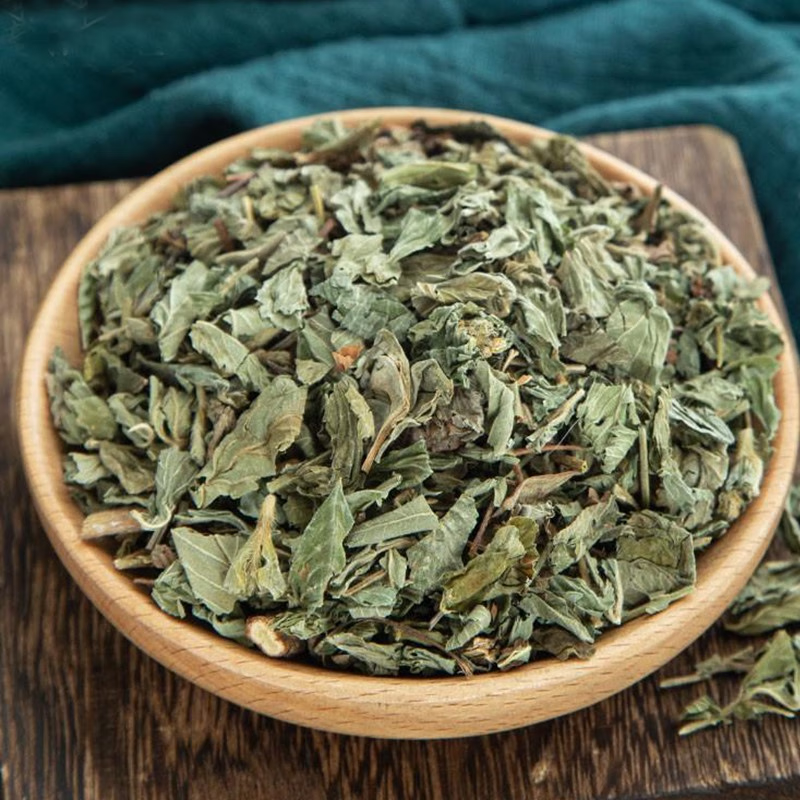

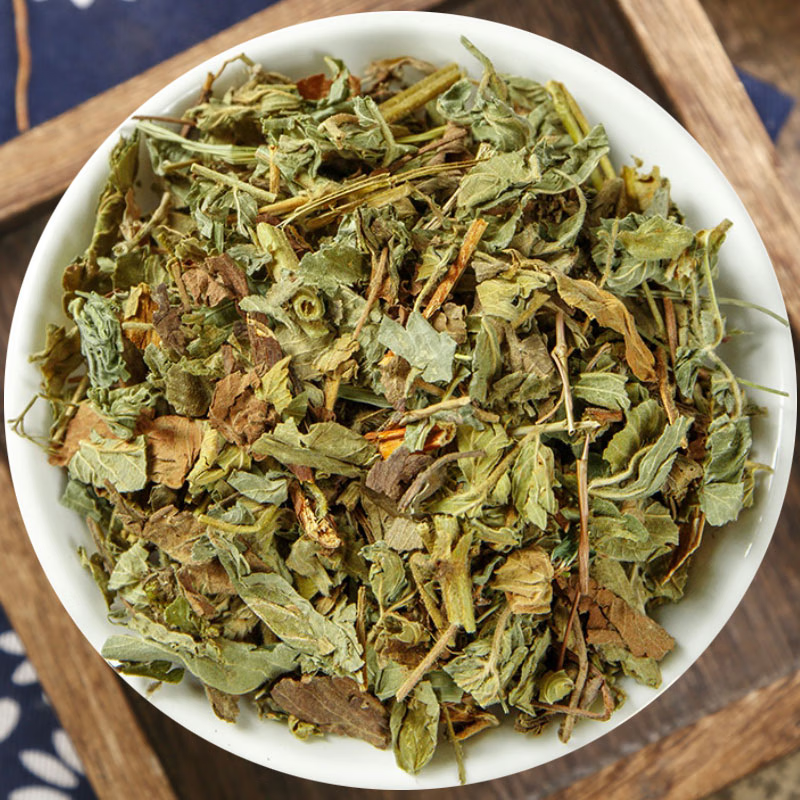


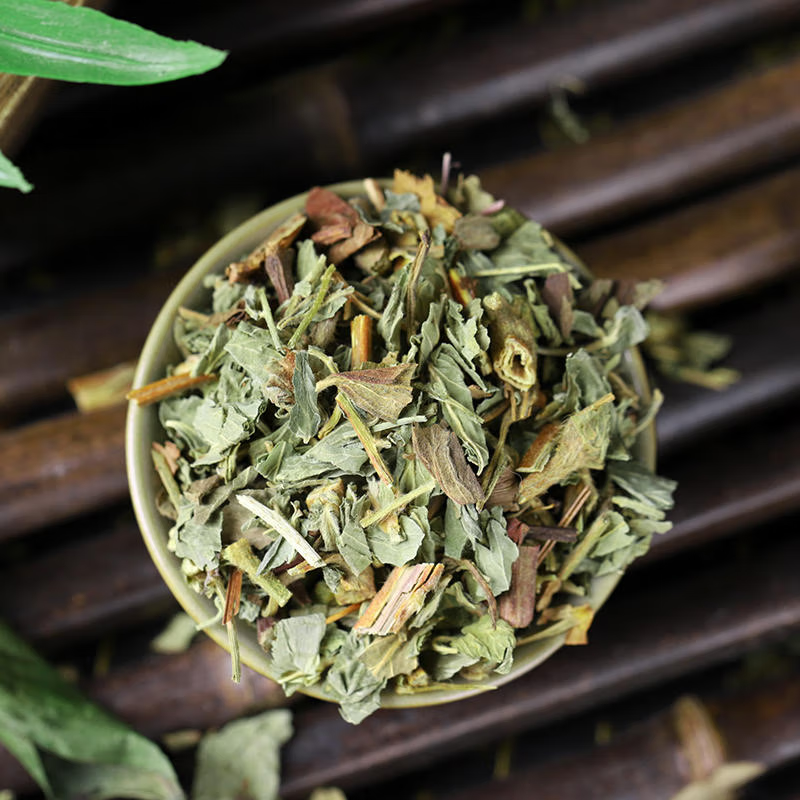
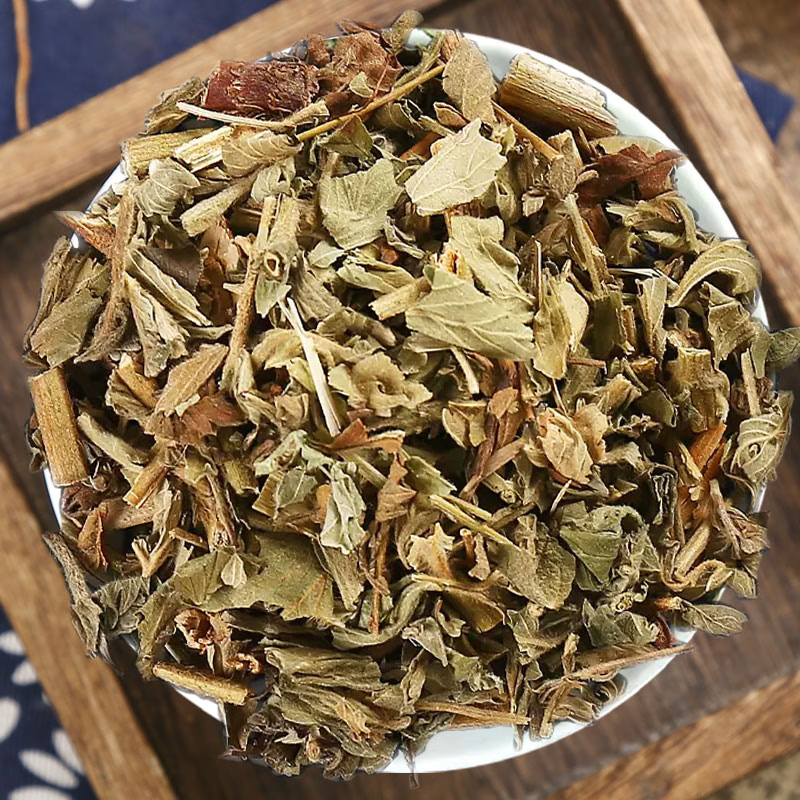

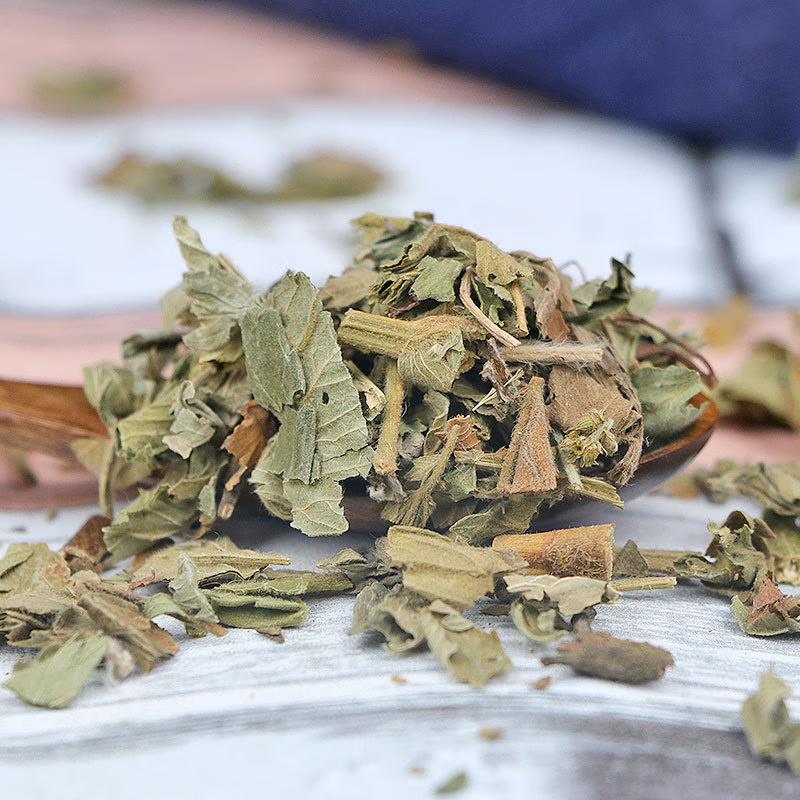

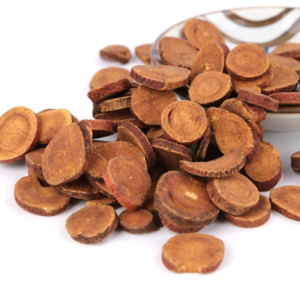
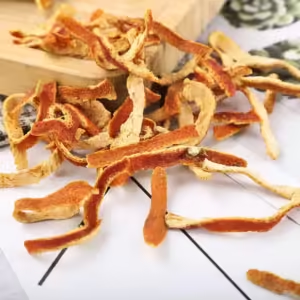
Értékelések
Még nincsenek értékelések.